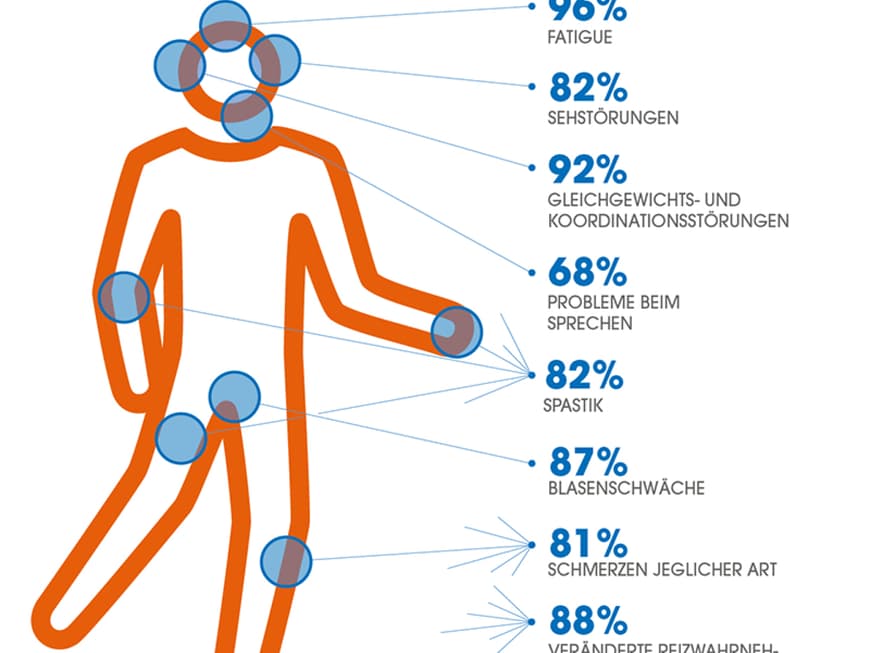
What is multiple sclerosis, or MS for short?
Multiple sclerosis is a chronic inflammatory disease of the central nervous system. A key feature of MS is inflammation in the brain and sometimes also in the spinal cord. The body's own immune cells attack the envelope layer (a type of protective layer) of the nerve cells. If this protective layer is damaged, the conduction of nerve impulses is disrupted. This means that the signals can no longer be transmitted correctly. Depending on where and how severe the damage is, different symptoms occur.
What are the causes of MS?
The cause of the disease is ultimately unknown. However, there appears to be a genetic predisposition, i.e. a willingness to develop the disease.
What are the symptoms of MS?
Characteristic MS symptoms include visual, sensory and movement disorders as well as rapid fatigue.
How is multiple sclerosis diagnosed?
As a rule, the patient has an attack with sudden visual disturbances, paralysis of an arm or is unsteady on their feet and then goes to a neurologist. The neurologist then orders a magnetic resonance imaging (MRI) scan of the brain, which reveals inflammatory foci. This is followed by an examination of the cerebrospinal fluid and a very detailed clinical check-up. In many cases, it is not the first but the second actual MS attack that leads to the diagnosis.
How can MS be treated?
The treatment of multiple sclerosis consists of three pillars: Pillar one comprises the treatment of an acute relapse - i.e. when foci of inflammation and neurological symptoms, such as impaired vision or sensation, occur. The second pillar is long-term course-modifying therapy. Medication is used to try to influence the course of multiple sclerosis as favorably as possible in the long term. Pillar three describes symptomatic therapy, i.e. the treatment of symptoms such as spasticity or paralysis.
Where can I find further information on multiple sclerosis?
There are various self-help groups that offer advice and support to those affected and their relatives (German Multiple Sclerosis Society - DMSG e.V.). There are also patient websites such as www.ms-persoenlich.de, which provide information for sufferers as well as their relatives and other interested parties on various topics relating to MS.
These symptoms can occur with multiple sclerosis:

Further information is available in the free magazine "MS persönlich" or online at www.ms-persoenlich.de.
